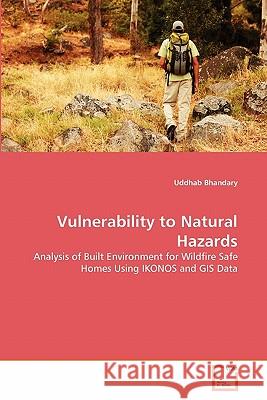Vulnerability to Natural Hazards » książka
Vulnerability to Natural Hazards
ISBN-13: 9783639295863 / Angielski / Miękka / 2010 / 184 str.
This book discusses vulnerability to natural hazards, method of evaluating vulnerability to natural hazards, and finally evaluation of risk factors that influence the probability that a house will burn from wildfire. A logistic regression is used to analyze data processed from pre-fire and post-fire IKONOS images and other geo-referenced data. The dependent variable is the probability that a given house will burn. A total of 12 independent variables are evaluated: vegetation density; area of defensible space; adjacency of a parcel to public lands; proximity of a house to fire station; road width; road type; parcel size; subdivision morphology; assessed value; elevation; slope and aspect. Model results generally support dominant measures and strategies for wildfire risk reduction including vegetation treatments, site selection with respect to topography, and improving access to fire stations.
This book discusses vulnerability to natural hazards, method of evaluating vulnerability to natural hazards, and finally evaluation of risk factors that influence the probability that a house will burn from wildfire. A logistic regression is used to analyze data processed from pre-fire and post-fire IKONOS images and other geo-referenced data. The dependent variable is the probability that a given house will burn. A total of 12 independent variables are evaluated: vegetation density; area of defensible space; adjacency of a parcel to public lands; proximity of a house to fire station; road width; road type; parcel size; subdivision morphology; assessed value; elevation; slope and aspect. Model results generally support dominant measures and strategies for wildfire risk reduction including vegetation treatments, site selection with respect to topography, and improving access to fire stations.











